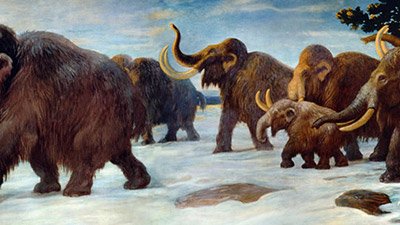Mosasaur: Lizard or Whale?
A whale of a tale.
News Source
The mosasaur was a marine lizard, not a whale. But like the whale, evolutionists believe it started out—ancestrally speaking—without much in the way of swimming adaptations. Over 27 million years, researchers claim it evolved into such an excellent swimming predator that it ruled the seas.
Mosasaur fossils are found in the late Cretaceous layers of the geologic column. Evolutionists believe mosasaurs coexisted with dinosaurs from 98 to 65 million years ago and became extinct along with the dinosaurs at the K-T boundary. Johan Lindgren and colleagues from Lund University believe they have now traced the evolution of the mosasaur by analyzing its locomotion.
The group has accomplished this feat by carefully analyzing the skeletons of four varieties of mosasaurs. Since they don’t have soft tissue to examine, they assume the fins and tail structures were just like those of extant animals like sharks and sea snakes. Therefore, they filled in gaps with modern configurations.
Swimming patterns of living creatures range from the undulating pattern seen in sea snakes to the pattern seen in tuna wherein “the body is held somewhat rigid and motion is restricted to the posterior tail.”1 Although the authors admit morphology and swimming style do not always correspond, the undulating pattern is good for bursts of speed but not endurance. The more rigid pattern is generally suited for long pursuit in the open ocean.
Because there are four known types of mosasaurs, the authors believe these types represent evolutionary stages. By classifying the swimming style suited to the morphology of each, they assert that the mosasaur progressed through evolutionary stages of morphology as it climbed to its ocean throne. Whatever information is missing they add by inserting information from a suitable living creature. Thus they have “discovered” the “Incremental stages of major evolutionary transitions within a single animal lineage [such as] are rarely observed in the fossil record.”2
Carbon isotope analysis of tooth enamel suggested that each variety had a different sort of ocean habitat. [page 462, original article] Yet that fact is a logical consequence of the fact that each variety possessed adaptations suitable for its habitat.
The authors also noted that each variety tends to occupy a characteristic place in the geologic column. [page 462, original article] Yet that should not be surprising since, at the time of the global Flood, upheavals would have overwhelmed and buried mosasaurs in relation to their varying habitats and swimming abilities.
In reality, the authors have just lined up four varieties of mosasaurs in order of swimming ability. Neither segregation within the geologic column nor evidence of distinctive habitats proves the varieties evolved sequentially over 27 million years. They have not observed “incremental stages of major evolutionary transitions within a single animal lineage . . . in the fossil record.”
From a biblical point of view, the original mosasaurs were created fully functional on the fifth day of Creation week about 6,000 years ago. Given the genetic variability available within the mosasaur genome (and possibly variety from mutations after the Fall), varieties more suited to certain habitats may have emerged. Yet any new varieties were only a product of the genetic diversity available within the original created kind or kinds (or potentially from mutations after the Fall). These varieties would have lived at the same time, each in its most suitable habitat.
Further Reading
- Get Answers: Created Kinds (Baraminology), Missing Links
For More Information: Get Answers
Remember, if you see a news story that might merit some attention, let us know about it! (Note: if the story originates from the Associated Press, FOX News, MSNBC, the New York Times, or another major national media outlet, we will most likely have already heard about it.) And thanks to all of our readers who have submitted great news tips to us. If you didn’t catch all the latest News to Know, why not take a look to see what you’ve missed?
(Please note that links will take you directly to the source. Answers in Genesis is not responsible for content on the websites to which we refer. For more information, please see our Privacy Policy.)
Footnotes
- Johan Lindgren, Michael J. Polcyn, and Bruce A. Young, “Landlubbers to Leviathans: Evolution of Swimming in Mosasaurine Mosasaurs,” Paleobiology 37, no. 3 (Summer 2011): 445–469, doi:10.1666/09023.1.
- Ibid.
Recommended Resources

Answers in Genesis is an apologetics ministry, dedicated to helping Christians defend their faith and proclaim the good news of Jesus Christ.
- Customer Service 800.778.3390
- © 2024 Answers in Genesis







